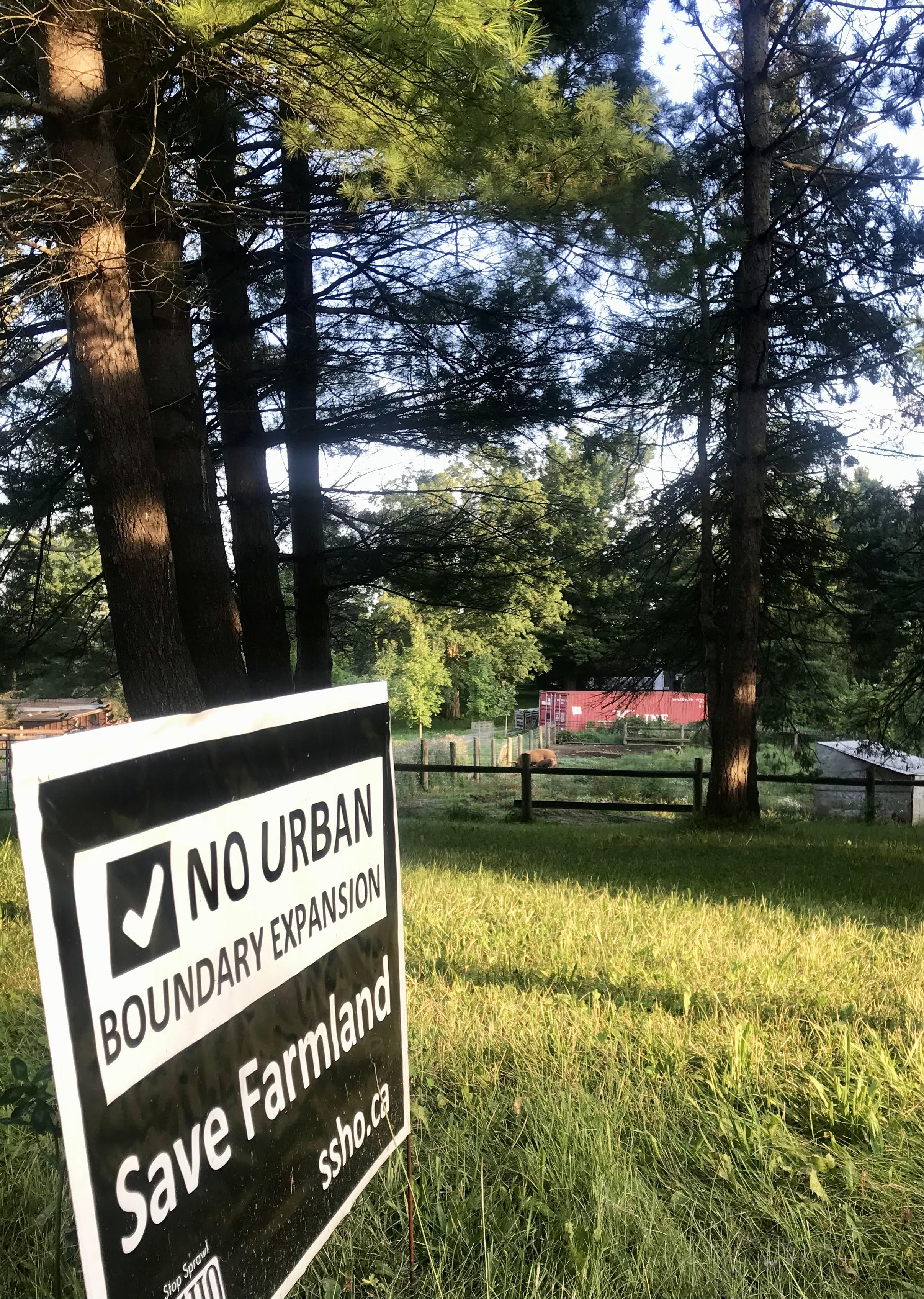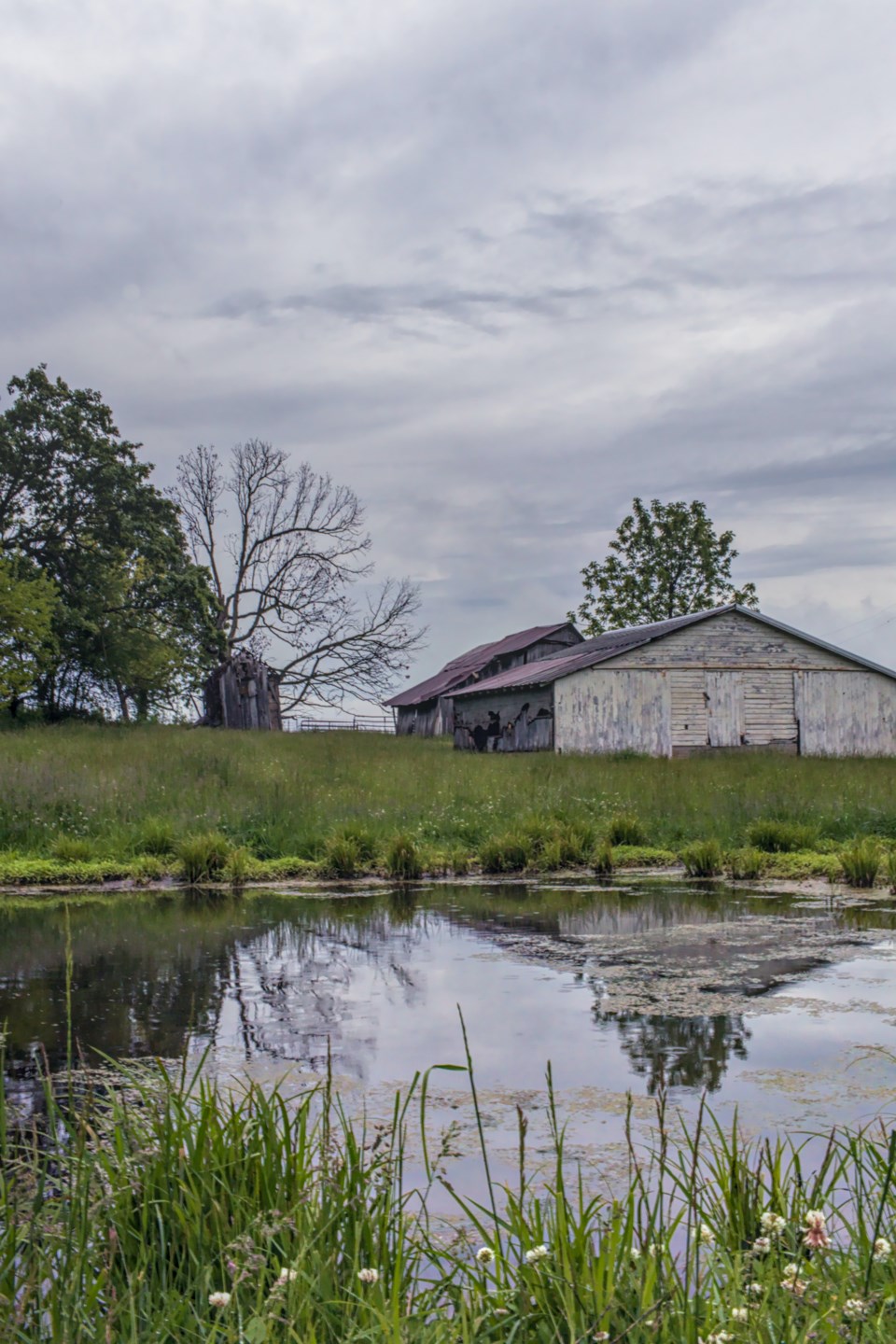Late on a Friday night in November, when most of us were kicking back for the weekend, a clarion cheer rang out through the streets of Hamilton. Against all odds, the people of Hamilton fought back against the plan to convert 3,300 acres of prime agricultural land to houses and pavement. And they won!! Hamilton will convert zero farmland to urban uses – nada- nil- zilch.
The revolt had been brewing since Hamilton council prepared to endorse the staff report that gave them no option but to approve converting all of Hamilton’s unprotected farmland to urban uses. Citizens were appalled to see there was no alternative presented. They were moved to raise their voices and demand another option – one that kept the current boundary firm.

The report was on Hamilton’s council agenda of March 29. The citizens were prepared and loaded up the meeting with delegations representing every walk of life. After ten straight hours of powerful delegations, councillors were convinced that they should consider an alternative growth scenario, one that staff clearly did not support – a firm urban boundary option.
These citizens were not part of any pre-existing group. They were individuals who had misgivings about losing valuable farmland and had a different vision for how their city should grow.
More Hamiltonians from diverse parts of the city began talking to each other about how to promote the firm urban boundary. Using zoom, they met regularly to strategize.
A primary focus for their campaign was public education. They believed that if people understood what the issues were and what an alternative growth scenario would mean to them, they would also understand the need for a firm urban boundary. If the people were educated, they would be moved to speak up and make their wishes known.
The campaign began with social media and the creation of Stop Sprawl HamOnt (ssho.ca). They offered webinars on growth and density. They made videos showing gentle density. They conducted workshops on delegating. They started email campaigns. They taught people the value of farmland. They sought out help from other organizations such as Environmental Defence and Wellington Water Watchers. They learned more about the provincial growth legislation. They started conversations with their councillors; They recruited educators, healthcare professionals, farmers, faith leaders and researchers. They held fundraisers and bought lawn signs.
The City sent out a survey to all homes asking people how they wanted to grow, either through ‘ambitious’ density including expansion onto the farmland or through higher density with a firm urban boundary. The City itself made no other effort to educate its residents about the implications of the two options. On the other hand, the citizens spent months educating the public on the merits of reinvesting in the core of the city and providing density along their new LRT line. They talked about adding vitality to the city and creating a vibrant lifestyle for residents. They also talked about the fact that Ontario is losing on average 175 acres of farmland a day to urbanization and that the soil in Hamilton is some of the best in the country.
The final result of the survey was stunning. Over 18,000 surveys were returned, with 90% in favour of preserving farmland and growing by intensifying within the existing city.
Hamilton Council met to make their decision on Nov. 9, when delegations were again welcome. The meeting went on for 13 hours of delegation presentations, at which point council recessed until Nov. 19. The meeting continued for ten more hours, but when it was all over, the vote was 13 to 3 in favour of farmland preservation and a firm urban boundary.
The people had won! They had successfully outmaneuvered all of the consultants’ tactics to garner support for the staff report. They successfully countered the unprecedented scare tactic from the Minister of Municipal Affairs and Housing published in the Hamilton Spectator warning council of potential consequences of not expanding their boundary.
The amazing thing is that these were not experts or people with a grand plan at the beginning. It started with a few conversations amongst ordinary people. And so it began by pooling their resources and continuously reaching out, inviting more and more citizens to join in and contribute to the cause.
All municipalities in the Greater Golden Horseshoe are going through this same exercise of reviewing their official plans and making decisions about expanding their urban boundaries to accommodate growth out to the year 2051 as mandated by the Provincial government.
It makes one wonder how informed the residents are in all of the other GGH municipalities. Tens of thousands of acres of prime agricultural land are being considered for conversion to urban uses. In Halton Region, the scenarios range from zero conversions to over 10,000 acres. Milton council alone has formally asked for 9,000 acres to be brought into the urban boundary.
But is this the future Ontarians want? Do they really want to destroy tens of thousands of acres of prime agricultural land when only 5% of all the land in Canada is good for growing food? We are living in a time when supply chains are showing their vulnerability. Our fruits and vegetable come from places that are experiencing terrible droughts. How long before the price of that food will make us rethink food security?
These are things that Hamiltonians have been thinking about, and they have come to the conclusion that sprawl is not inevitable. They have chosen to speak up. The citizens and councillors of Hamilton did what most of us have not been doing – they spent some time learning about the consequences of choosing sprawl and decided they should reject it.
Due to the pandemic, municipalities have been consulting with the public through zoom meetings where a lot of information is presented, followed by breakout rooms to ask a few questions. And then it is over. Comparing this style of consultation to the comprehensive consultation the citizens of Hamilton created is like night versus day.
What the Hamilton example shows us is that education is the key to good consultation. Both the public and the decision-makers need to have a firm grasp on the consequences of these decisions and an understanding of the challenges we are facing as we look out 20 or 30 years from now.
If you are worried about climate change, or food security, or congestion or the vibrancy of your community, consider checking into what your council is planning for the future. It’s not too late for education to begin. You can start learning at StopSprawlHalton and Yours To Protect – Take action to say Ontario is not for sale.



